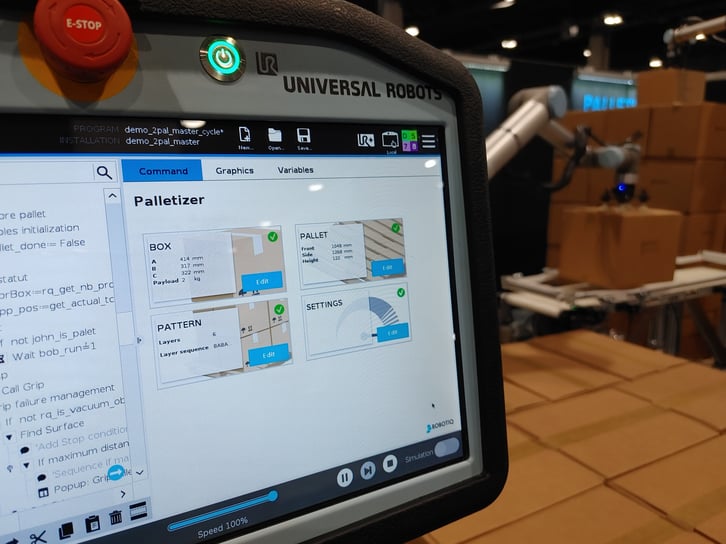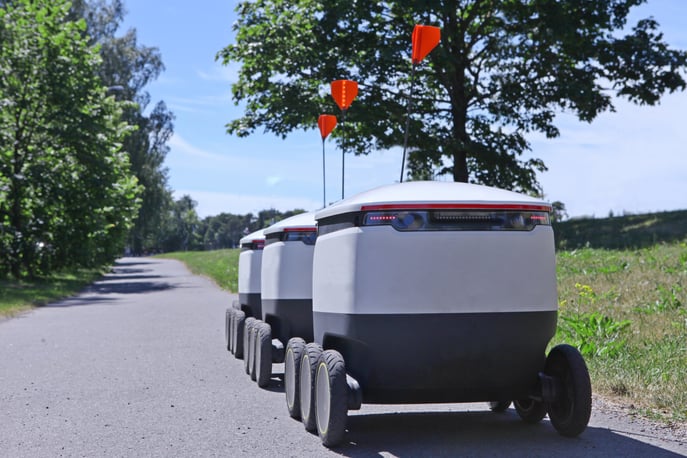7 Exciting and Effective Applications for Robotics in Retail

Robotic technology is transforming the retail industry. With robots, retailers of all sizes can automate and streamline operations more easily and effectively than ever before.
In this competitive retail landscape, it's becoming ever more important that retailers adopt technologies like robotics to keep up with the industry and run a successful business.
Robotic applications in retail range widely, from packaging and palletizing to shelf stacking and sorting. The retail industry hasn't traditionally been as quick to adopt robots as, say, the automotive industry. However, more and more companies are now seeing the benefits of adding robots to such tasks to help them continue to grow.
Let's look at how retail robotics is helping companies like yours to adapt and what sort of applications work for retail.
How robotics is helping retail companies keep up with change
Robotic technology has become increasingly important in retail, particularly in the past few years when the industry has changed considerably.
Retail companies are looking for ways to keep up with constantly changing customer demands, regulations, and supply chain disruptions. Robotics offers various solutions to help meet these demands in an accessible and affordable way.
Modern retail customers now expect a faster, more personalized shopping experience. Robots can help to achieve this by streamlining processes, increasing throughput, and facilitating more customization.
The most established application areas for robots are in manufacturing and logistics. However, in recent years, we have begun to see robotic technologies used in brick-and-mortar retail stores as well. From sophisticated shelf scanners to customer service robots, it's clear that robots are here to stay in the retail industry.
7 exciting and effective applications for robotics in retail
There are many ways that you can apply robots in your retail company. Some applications, such as palletizing, are more established and robust. Other applications, like in-store robots, are still at the experimental or trial stage.
Here are 7 exciting and effective applications, along with the benefits they could bring to your retail business:
1. Palletizing robots
Palletizing robots are now a firmly established technology in many retail companies, usually used for logistics and shipment. The robots autonomously load shipping pallets for shipping.
A great benefit of palletizing robots is that they remove this arduous task from the hands of human workers. At the same time, they reduce injury, improve palletizing consistency, and speed up the shipment process.

2. Inventory management robotics
Robots are also now being used to scan shelves, log items, and organize warehouses. This leads to more accurate inventory counts and better stock management.
The scanning and product tracking tasks can also be incorporated into other robotic tasks, such as during packaging or palletizing.
3. Product packaging robots
Robots are also becoming a vital tool for primary and secondary packaging tasks, such as individual wrapping of products or placing them in boxes.
By adding robots at this stage, you can speed up packaging and create a more consistent process, leading to faster delivery times and improved customer satisfaction.
4. Delivery robotics
Robots are also starting to be used for the delivery of products. This can be done both internally — such as delivering products from one area in a warehouse to another — and externally to deliver products to customers.
It looks likely that delivery robotics will be one of the major growth areas in retail robotics in the coming years, especially last mile delivery.

5. In-store robotics
One area that is still relatively experimental right now is in-store robots. These can include stock management robots and even customer service robots.
An example of in-store robots in action is the robot that retailer Lowe's installed to help customers find items in the store. At the same time, the robot also performs real-time inventory tracking.
6. Automated shelf-stocking robotics
In warehousing, robots can also automate the process of stocking shelves. This reduces the workload on human workers along with the potential for injury caused by lifting heavy items.
Companies, such as Amazon, have moved almost entirely to robotic warehousing. This allows them to accurately control stock and optimize warehousing processes through artificial intelligence.
7. Automated picking robotics
Finally, robots can automate the process of selecting products and picking them for shipment. This can help reduce the errors associated with manual picking.
Another form of automated picking is when robots are combined with quality sensors to remove defective products automatically from production lines.
Spotlight on palletizing robotics for retailers
Which robotic application is the easiest to deploy and has the easiest return on investment? Palletizing seems a clear winner for many businesses. With off-the-shelf application kits, such as the Robotiq Palletizing Solution, you can quickly and easily add palletizing automation to your facility.
Robotic palletizing helps to streamline the shipping and handling of products. It allows you to make better use of your human workers and reduces the risk of product breakages that are common with manual palletizing.
The right robotic solution will provide you with great flexibility for different palletizing tasks and configuration. And you can also add additional tasks into the robotic deployment, such as sorting and counting boxes.
If you're looking for a single application that will give you clear benefits quickly, robotic palletizing is a great candidate.
Is now the right time for you to use robots in retail?
Companies across the retail industry are now using robots to help improve their productivity and competitiveness.
Should you consider adding robots to your operation? It depends on your current needs and goals. However, it's safe to say that robots aren't going anywhere. It makes sense to consider them now or you risk missing out on great potential benefits.
A good place to start is looking at specific applications, like palletizing, and seeing if they could be suitable for your retail business.
Which robotic application looks the most promising for your retail business right now? Tell us in the comments below or join the discussion on LinkedIn, Twitter, Facebook, or the DoF professional robotics community.








Leave a comment